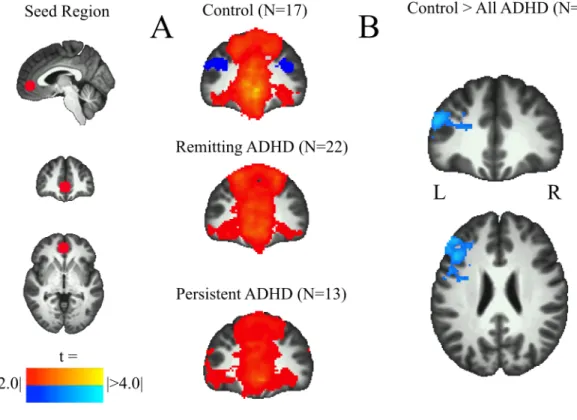Brain Differences Between Persistent and Remitted Attention-Deficit/Hyperactivity Disorder
Texte intégral
Figure


Documents relatifs
ABSTRACT We aimed to establish the prevalence and distribution of attention deficit–hyperactivity disorder (ADHD) symptoms and other associated comorbid mental health problems
This report on the optimal service trajectory for children, adolescents and young adults with attention deficit disorder with or without hyperactivity (ADHD) or related
Rather than viewing ADHD symptoms as a deficit for individuals in the work context, this stream of research has empirically shown that there is a positive association between
Subcortical brain volume, regional cortical thickness and cortical surface area across attention- deficit/hyperactivity disorder (ADHD), autism spectrum disorder (ASD), and obsessive
Objective To review research findings that consider whether attention deficit hyperactivity disorder (ADHD) is a discrete entity or whether it is more consistent with an
A s a family physician who treats many children and adults with attention deficit hyperactivity disor- der (ADHD), I was glad to see the August 2006 issue of Canadian
4-8 Environmental factors, such as maternal smoking and drinking during pregnancy, also have a role. Zametkin et al 9 postulated
We set out to study the contribution of common genetic variants to the risk for ADHD across the lifespan by conducting meta-analyses of genome-wide association studies on